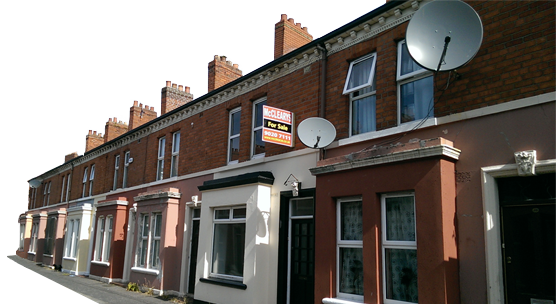There is no thing as a ‘one size fits all’ approach when it comes to trees, their influence on property, or their safety (or risks) they pose for the inhabitants of the home. This is a brief guide which we hope will be helpful when assessing a tree on your own property.
However much we love and rely on trees, you need to take extra care when they are in close proximity to buildings. Trees, by their very nature can be very large, very heavy and can drink a lot of water from the soil surrounding them. The following list of safe tree distances is a list referring to the potential damage from their roots to the foundations of your property which may cause subsidence.
There is of course another danger of large trees near to your property which is from impact damage to your property (or persons in the property or garden) following a violent storm.
There is very little you can do to prevent storm damage other than to ensure the tree is healthy and in good condition. The rest, as they say, is up to the Gods! ![]()
In addition to storm damage, there is also the fact that your tree may be old, in poor health and in poor structural condition. Trees and their root system can be weakened by previous storms or maybe they are in just poor condition due to poor management, ineffective or potentially damaging pruning methods. Don’t forget (the dreaded) ivy growth. If left unchecked, ivy can add weight to the tree and can eventually even kill the tree by uncontrolled growth. You should always take professional advice if you are in any doubt as to whether a tree is structurally safe and also if it is likely to affect the structure of the property it stands near to.
It is with some reluctance I might add, that we decided to publish the recommended safe distances of trees to buildings. This list was produced by the ABI (Association of British Insurers). The reason why we have been reluctant to publish this list was because we didn’t want to you think that you were ‘safe’ from the damage from a tree if the list indicates your tree is safe. Every single tree in every single location is different so please do not rely on the following information. Yes, perhaps use it as a guide but you MUST speak to a qualified arborist if you have any doubts as to whether a tree is ‘safe’ and how to deal with it if it isn’t.
| Species | Normal Mature Height (M) | Safe Distance (M) |
| Apple / Pear | 12 | 10 |
| Ash | 23 | 21 |
| Beech | 20 | 15 |
| Birch | 14 | 10 |
| Cypress | 25 | 20 |
| Cherry | 17 | 11 |
| Damson | 12 | 11 |
| Elm | 25 | 30 |
| Hawthorn | 10 | 12 |
| Holly | 14 | 6 |
| Horse Chestnut | 20 | 23 |
| Laburnum | 12 | 9 |
| Laurel | 8 | 6 |
| Magnolia | 9 | 5 |
| Maple | 21 | 20 |
| Oak | 24 | 30 |
| Pine | 29 | 8 |
| Plane | 30 | 22 |
| Plum | 12 | 11 |
| Poplar | 28 | 35 |
| Sycamore | 24 | 17 |
| Spruce | 18 | 7 |
| Walnut | 18 | 14 |
| White Beam / Rowan | 12 | 11 |
| Willow | 24 | 40 |
| Yew | 12 | 5 |
For more information about trees and how they can affect a property see our other news item
The Arboricultural Association at www.trees.org.uk is able to provide you with details of local, qualified arborists who will be able to help you identify any potential problems or safety and maintenance issues you may have with a tree on your property or one you are hoping to purchase.




